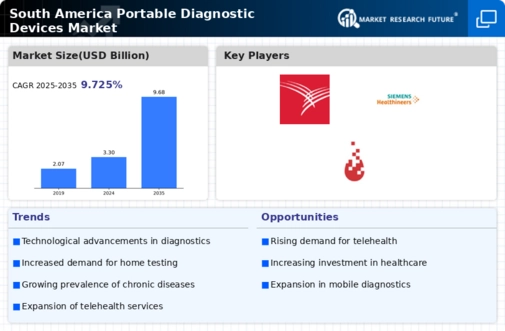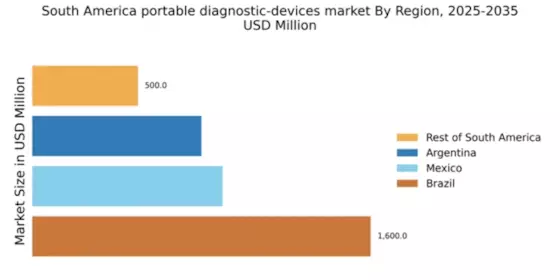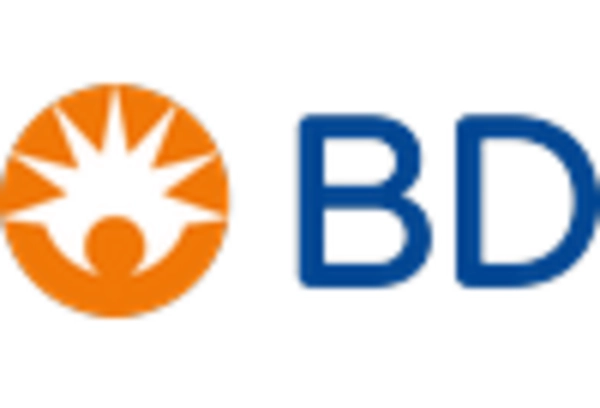Rising Healthcare Expenditure
The increasing healthcare expenditure in South America is a pivotal driver for the portable diagnostic-devices market. Governments and private sectors are investing more in healthcare infrastructure, which includes the procurement of advanced diagnostic tools. In 2025, healthcare spending in the region is projected to reach approximately $500 billion, reflecting a growth of around 8% annually. This surge in investment is likely to enhance the accessibility and availability of portable diagnostic devices, particularly in remote areas where traditional healthcare facilities may be lacking. As a result, the portable diagnostic-devices market is expected to benefit from this trend, as more healthcare providers seek to integrate these devices into their practices to improve patient outcomes.
Expansion of Telemedicine Services
The expansion of telemedicine services in South America is a crucial driver for the portable diagnostic-devices market. As healthcare providers increasingly adopt telehealth solutions, the need for portable diagnostic tools that can facilitate remote patient monitoring becomes evident. In 2025, the telemedicine market in the region is expected to reach $2 billion, growing at a rate of 25% annually. This growth is likely to create a synergistic relationship with the portable diagnostic-devices market, as healthcare professionals require reliable diagnostic tools to support virtual consultations. The integration of these devices into telemedicine practices enhances patient engagement and ensures timely interventions, thereby fostering a more efficient healthcare delivery system.
Growing Prevalence of Chronic Diseases
The rising prevalence of chronic diseases in South America is significantly influencing the portable diagnostic-devices market. Conditions such as diabetes, cardiovascular diseases, and respiratory disorders are becoming increasingly common, necessitating regular monitoring and timely interventions. According to recent statistics, chronic diseases account for nearly 70% of all deaths in the region, underscoring the urgent need for effective diagnostic solutions. This scenario creates a substantial demand for portable diagnostic devices that enable continuous health monitoring and early detection. Consequently, the portable diagnostic-devices market is likely to expand as healthcare providers and patients alike recognize the importance of these tools in managing chronic health conditions.
Technological Integration in Healthcare
The integration of advanced technologies into healthcare practices is a significant driver for the portable diagnostic-devices market. Innovations such as artificial intelligence, machine learning, and mobile health applications are enhancing the functionality and usability of diagnostic devices. In South America, the adoption of these technologies is expected to grow, with a projected increase of 15% in the next five years. This technological evolution not only improves the accuracy of diagnostics but also facilitates real-time data sharing between patients and healthcare providers. As a result, the portable diagnostic-devices market is poised for growth, as stakeholders seek to leverage these advancements to enhance patient care and operational efficiency.
Increased Focus on Preventive Healthcare
There is a notable shift towards preventive healthcare in South America, which is driving the demand for portable diagnostic devices. As awareness of health issues rises, individuals and healthcare systems are prioritizing preventive measures to reduce the burden of diseases. This trend is reflected in the growing market for home-based diagnostic tools, which are projected to grow by 20% annually. The portable diagnostic-devices market stands to gain from this focus, as more consumers seek convenient and efficient ways to monitor their health proactively. This shift not only empowers patients but also alleviates pressure on healthcare facilities, making portable diagnostic devices an essential component of modern healthcare strategies.


















Leave a Comment